Contributed By
Published
Is the truth behind the Divine Visitor crystal clear for all to see, or have we yet to delve into the truth? This little theory explores an idea ignored by an unquestioning status quo.
The Divine Visitor is supposed to be the player who assumes control of Edge. But what if the player took control of the Divine Visitor, an altogether different entity that then occupied Edge? Is the case really closed when there are still so many unanswered questions and the truth is still open for debate?
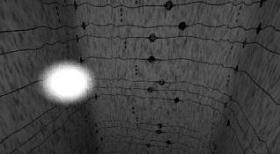
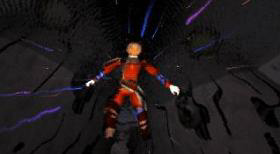
If the leaders of the Ancient civilisation, known only as the “ancient ones” or “the rulers of the ancient times”, converted their minds into computer data and uploaded those minds to the Sestren data network networking the Towers, then they would need host bodies to occupy when they returned to the planet after it had cleansed and regenerated itself (in its own blood, but that’s another story). What better place is there to hide from the bio-weapons programmed to hunt down humanity than Sestren space? Imagine if the Divine Visitor was an actual Ancient without such a host. He/she/it leaves Sestren and then downloads itself into the body of Edge. By now Edge has succumbed to a fatal shotgun wound, or has failed to survive his long fall into a deep chasm where a pocket of water lay in wait at bottom which would still have shattered every bone in his body as opposed to cushioning his descent (the water would make no difference: to his body it would feel as solid as concrete), or simply drowned (how long can a man hold his breath underwater?). There’s no way Edge could have survived the fall. None. How then could the player, an outsider, save him?
Edge is stationary beneath the deep pocket of water for what seems like an eternity until a ball of white light that would almost seem transparent if it were not for its buzzing vibrant exterior, spirals and silently descends from above towards Edge’s motionless body. The water sizzles as soon as the ball of energy makes contact with it as if the water was evaporating in the heat of a fire, and lights up the entire ruin from bottom to top in a momentary flash of light that pushes back the darkness. Colourful multi-coloured beams of light gather around Edge and are slowly pulled into him, interrupting his stillness. Floating in complete darkness, the water becomes clearer and clearer with each passing beam drawn towards Edge. He awakens the very moment the last one makes its way into him. Believe it or not, but Edge is quite literally brought back from the dark jaws of death itself.
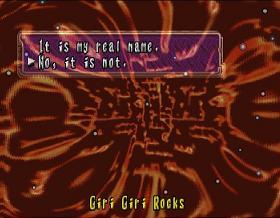
When we enter our name, the name of the one who controls Edge, before the orb of white light that is the Divine Visitor enters Edge’s body, we are inside Sestren space. We see the coiling patterns of light that are unique to the domain ebb and flow like they are being swept along by invisible currents, while the background seems to bend like ripples moving through reality.
Whether Sestren is an AI incarnated into a physical form existing between dimensions, or whether Sestren space is an elaborate virtual reality is the subject of heated debate. It is never explicitly stated one way or the other. However, the fact that Edge can even breathe in there does provide some food for thought. It’s hard to determine if the dragon was keeping him alive artificially or if the place itself was not physically real.
Sestren itself welcomes the return of the Divine Visitor when the dragon and Edge finally confront it in its own domain, if anger directed towards the Divine Visitor’s defiance constitutes a welcome. That would imply that it was once here before and helps to piece together an explanation. Not only does Sestren say that the Divine Visitor has returned with a human in tow, but has disobeyed the will of the Ancients. The Divine Visitor couldn’t disobey the will of the Ancients unless it was one of them or was once under their control. The player could not disobey Sestren or the Ancients because the player never followed their orders in the first to place to disobey them.
Sestren reminds the Divine Visitor that their duty is to fulfill the will of the Ancients, and continues its verbal assault on the Divine Visitor by condemning it for choosing a new, stray path, where it now ignores its duty. What duty? If Sestren was talking to the Divine Visitor (which it was otherwise it wouldn’t have referred to it by name), then we must ask ourselves how exactly the Divine Visitor was ignoring its duty etc (as if an answer to this question was forthcoming). If Sestren is talking to the Divine Visitor, then Sestren’s every spoken word applies to it and it alone. The player wasn’t disobeying its ancient duty; the Divine Visitor was.
Sestren seems to be more worried about the Divine Visitor than the Heresy Dragon. Why? How is it the Divine Visitor holds the key to ending the will of an ancient race that Sestren was built to implement and protect? Team Andromeda maintained the illusion of Sestren holding a conversation with the dragon when in reality it is talking to the Divine Visitor due to the very fact that Sestren is speaking to the Divine Visitor in the presence of the dragon. When Sestren notices the Divine Visitor (whose goals happen to coincide with the dragon’s purpose) has returned with a human, who at that time are we meant to think Sestren has in mind? The dragon who has brought Edge along for the ride of course. Far be it for us to believe that the Divine Visitor hasn’t merely returned with a human, but in a human. The Seekers thought that the dragon was the Divine Visitor and at this point we have no reason to believe otherwise (the Heresy Dragon Program had visited Sestren space in the past, so you might be led to believe that Sestren is in fact talking to the dragon). That is, until Sestren Exsis, the artificial intelligence controlling the whole Sestren domain, is destroyed.
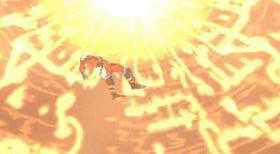
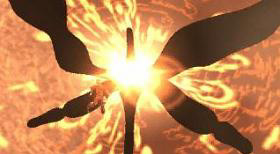
Edge wakes up from unconsciousness into a dreamy reality where he finds himself floating helpless for a second time. Not long after, a voice, he instinctively recognises as the dragon’s, draws his attention. Edge turns his head to find a massive four-limbed creature looming over him and standing out from its bright surroundings like a dark shadow, and here is where Edge finally meets the dragon’s true form. Now that Edge has the opportunity to actually talk to his friend (part of his dragon friend actually, but that’s another story), he asks him if he is the Divine Visitor. Edge finds the answer surprising: he is not. It only existed to lead the Divine Visitor to break the spell of the Ancient Age, and ultimately, to give humans control of their own destiny. The voyage that began when it strove to return the world to the hands of the people, a duty spanning thousands of years, was soon approaching an end now that humanity had finally been freed from the will of the Ancients.
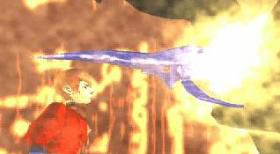
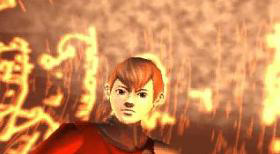
Edge discovers that his dragon was in fact something else that had entered the real world and reshaped a coolia in its image. Lundi called his dragon the Heresy Dragon for reasons that are unknown to us, but it does imply that it was a heretic in the eyes of the system, raging against the machine, while I call the entity that shaped the dragon outside Sestren into what it was the Heresy Dragon Program because it reprogrammed the DNA of a coolia and reshaped it into something that it was never meant to be. Edge helped the Heresy Program return to its place of origin to finish what it had started so long ago, and was surprised to learn that he had been guided by an unseen force the whole time. Edge even sees the head of his dragon emerge from the dragon program which supports the fact that they are two separate entities.
Now that the world was no longer controlled by the will of the Ancients, the Heresy Program’s mission was complete, and there was nothing left for it here. With Sestren destroyed, the Heresy Dragon Program now carried the burdensome will of those masters and therefore must be destroyed. This can only mean one thing in my mind: the Heresy Program had taken control of the Towers, which were the embodiment of the Ancients’ will. The will of the Ancients could only be with it if it was created by the Ancients too. The Heresy Program’s purpose to destroy the Towers could not have been a part of the Ancients’ plan, otherwise Sestren would never have resisted, but it’s possible that two of the Ancients’ creations came into conflict by accident. Sestren refers to the Heresy Program and the coolia it occupied as an impurity, so perhaps a virus activated it earlier than planned, or perhaps the Heresy Program was the virus. It’s even possible that the Heresy Dragon Program was meant to activate after ten thousand years specifically to remove the Towers from the face of the planet because the monsters they were built to create were programmed to hunt down humans without exception and nothing could change their programming. But because the world hadn’t grown into the paradise that the Ancients had envisioned yet, Sestren perceived the Heresy Program as a fatal error running amok in the system, and consequently tried to stop it.
In order to ensure that their plans came to fruition, the Ancients may have even seen themselves as the enemy, and might have become the victim of their own creations in order to ensure that nothing stood between the Towers and their goal of saving the planet. It’s not at all impossible that these creations turned on their own creators.
On one hand, I find it hard to believe that the Heresy Dragon Program only did what it was programmed to do without a care in the world, but on the other, the Ancients certainly didn’t program one of their own dragons to give humanity control of its own destiny. Still, the people who stole Azel wouldn’t have resorted to stealing her if they could simply create their own drones, so I remain firm in the belief that no one other than the Ancients could’ve created the Heresy Program. It had to be one of their own creations, but somehow reprogrammed with a different purpose in mind, and turned against them.
The black Heresy Program asks the one who dwells within Edge to press the button to pave the way for a new beginning. The Divine Visitor has no choice but to destroy the Heresy Program if there’s going to be any hope for a brighter future, or any future at all. Then the screen fades to black until we press a button on the Saturn controller. Edge then stares into the face of the Divine Visitor (our first person perspective), proving that it has now exited Edge’s body and that Edge himself can now actually see he/she/it. The Divine Visitor was the player, or so it seems, and yet the player took the form of a very noticeable orb of white energy – a gender neutral entity serving as the eyes and ears of the player. It would be very hard not to notice.
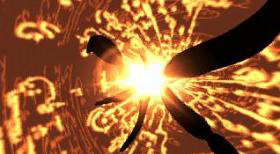
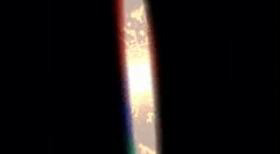
Here’s the best part of the theory: after the player presses a button on the Saturn controller the Heresy Program doesn’t deactivate or isn’t destroyed as you’d expect. It floats into the shining tunnel of golden light taking Edge with it never to be seen again (Team Andromeda wrote the series to end here). Fans can argue that the Heresy Program wasn’t destroyed at all, but lived to narrate the events that transpire in the the non-Japanese version of Panzer Dragoon Orta from an unseen vantage point inside Sestren. However, shortly thereafter, your screen – the screen of the Divine Visitor – turns off like any mechanical motion picture feedback device shutting down (see images above and below). What if by pressing the button you erased your computerized presence inside Sestren? Turned yourself off, so to speak.
What if the Divine Visitor was the consciousness of an Ancient who wiped the memories of all the other Ancients whose minds were translated into computer data from the Sestren data stream? Pressing the button couldn’t have shut down all the Towers for one simple reason: now that the will of the Ancients was with the Heresy Program, it and it alone was the only one in any position to deactivate the Tower network, so what, if anything, did pressing the button do? Another idea is that pressing the button turned off whatever hibernation chambers the Ancients slept in on the planet. Meaning they were just humans like everyone else. I choose both ideas. I think host bodies were kept frozen for the Ancients in preparation for the return of their minds. No human body could survive ten thousand years of hibernation. A drone designed for it, yes, but human bodies are fragile. If anything went wrong, then new bodies could be cloned without losing a single consciousness.
Needless to say, Sestren’s death at the hands of the Heresy Program left these hibernation chambers vulnerable. The result being the Divine Visitor switching them off, or the same viral impurity controlling the Heresy Dragon walking a short path towards their termination in the same manner. The drone Abadd couldn’t revive them simply because they were all dead. If the Ancients were temporarily immaterial – without bodies – no wonder they built drones to serve them.
Manual labour was beneath the Ancients by then it seems, because they had become an invisible hand pulling strings from behind the scenes. Drones were slaves to their ghosts, and continued to serve Ancient masters even when the Ancients had become nothing but a distant memory. By being as efficient as possible, the Ancients had literally lost touch with reality. Their servants did all their work for them, making their presence unnecessary, and if the Ancients were spheres of white energy, unable to interact with the world, it would explain why they were so dependent on drones and autonomous bio-weapons for survival. Drones would literally get their hands dirty, adding a whole new meaning to the idea of drones doing their dirty work for them. The Ancients needed to make their presence felt during their absence from the world, and they clearly needed servants to do it.
If we follow this train of thought to its natural conclusion, then it can only take us in one direction. If some of the “ancient ones” were always immaterial and could only interact with the world through the eyes and ears of others, then it could mean that some of them are still alive. Now that’s what I call food for thought.
Perhaps these Ancients were just hibernating and waiting until the time was right to return. They could do almost anything with the aid of their advanced technology, so there’s no telling what they could accomplish. They were an extremely advanced race who built the Tower network to guard the ecosystem after all, which meant they knew all of the universe’s secrets. The world was both saved from an early death and enslaved at the same time thanks to them.
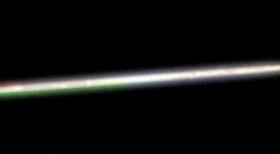
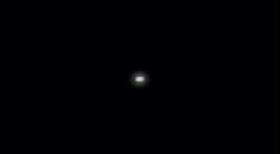
However, if the Divine Visitor was more than merely the player, then it had to be something. An Ancient is the first on my list of suspects. If the Divine Visitor was nothing more than the player like we are supposed to believe, then why do we keep watching the ending after its monitor shuts down? Why doesn’t the game end then and there? The Ancients thought of themselves as gods due to the fact that they could create life in their own image. The very name “Divine Visitor” betrays the orb’s identity: he/she/it was an actual Ancient. What better clue is there? The Divine Visitor was given that name for a reason. It was one of the gods. Even the Heresy Dragon is named in such a way so as to suggest that it was meant to overthrow gods, or at least because it came into conflict with another point of view that was so entrenched that it became religious. It’s impossible to dismiss this as all merely a coincidence when we can connect all the dots.
If the Ancients weren’t gods, or didn’t consider themselves gods, then why was the rogue Heresy Dragon called the Heresy Dragon? The Ancients are considered gods by the current inhabitants of the Panzer world, and dragons are considered to be messengers of those gods, even by the Seekers who had been studying the Ancient Age for over 200 years. When the Ancient scientists who recorded the Uru logs describe one of their own dragons as a messenger of the gods, what are we supposed to believe? Even if the Ancients weren’t gods, they did play god when they started creating life. The Ancient Age is known as the age of the gods, and it’s no secret that the Ancients were the ones who created the dragons.
The Heresy Dragon sought to end the reign of the Ancients; in other words, its (ancient) name defines it as something that rose up against the gods when it has clearly joined in the struggle against the will of the Ancients, not any actual gods. The prevailing theme here is self-evident. The Divine Visitor could just as easily be one of the gods of the Panzer world as well as the player. Remember, for an outsider, the player certainly had a real impact on the game world. The Divine Visitor was a part of the story whether we like it or not. Maybe the Seekers thought that the dragon was the Divine Visitor because dragons are known as messengers of the gods - something the Ancients called the Light Wing. Extensive research of the Uru ruins (which we know the Seekers studied) guided them to the description that the Ancients bestowed upon their dragon creation.
I refuse to believe that the Divine Visitor was nothing more than the player. In-game characters, including Sestren, were aware of its existence inside the actual game world (as opposed to being unaware of something outside of it). The Divine Visitor was the only entity that could bring the Ancient Age to an end, after all, so an AI as ubiquitous and as watchful as Sestren would have to be blind not to recognise it. Of course the Divine Visitor is the player, but that doesn’t change the fact that it was physically present in the game world to precipitate that end. Games are meant to have no relationship with reality whatsoever, so here it’s hard to see where reality ends and fiction begins. Sestren wasn’t aware of the player; it was aware of the Divine Visitor. If the Divine Visitor was the player and just the player, why didn’t Edge survive the consequences of his visit to Sestren space? The answer lies in the fact the Divine Visitor kept his body alive until the mission was complete. Edge was literally a walking corpse; he was already dead. Without the Divine Visitor to revive him, Edge would have fallen to his death, and his life would have ended before it had even begun.
Once the Divine Visitor separated from Edge, Edge simply died - a separation far from the inconsequential and nearer to the profound. You played the role of the Divine Visitor whose name you could choose like many RPG main characters. Ask yourself why you couldn’t change Edge’s name. Whether we like it or not, the Divine Visitor existed in the game world. It began its existence in Sestren, resurrected Edge by temporarily inhabiting his body, then left his body a lifeless husk upon departure. If Edge survived then the dragon would not have left him behind… unless Edge was dead. We must also remember that the game ends with Azel searching for Edge with no end in sight, and we are left wondering if she ever found him. That is, until the next game. Azel’s search for Edge ended in Azel only finding Edge’s DNA, but not Edge himself, further leading us to believe that his journey to Sestren was a one way trip, and dare I say, a tragic end to a tragic beginning. Like all true heroes, he sacrificed his life to save the world.
Not only was the Divine Visitor the player, but it was also one of the gods of the Panzer world whose reasons for shutting down the Towers were its own. In a world where the Ancients were considered to be gods by the people, the Divine Visitor was also seen as godly because it was beyond their understanding. In the eyes of the uneducated tribes of the Panzer world, the Ancients could only be described in terms of gods because there would simply be no other way to describe them (to their knowledge). The Ancients created life and could do the seemingly impossible, which is what gods do, but as we can see, “the gods” are far from immortal in this world. The fact that the Divine Visitor was the player doesn’t preclude the possibility of it being something else as well in my mind.
